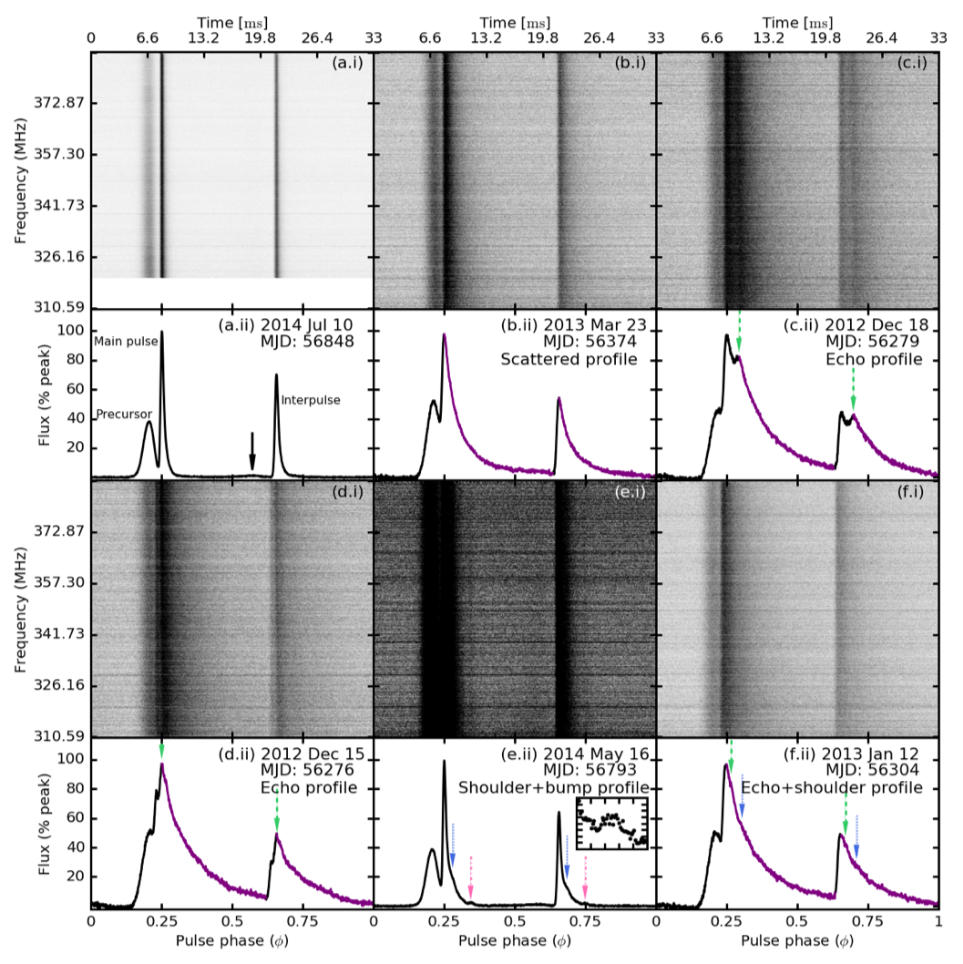Daily Image
07-01-2019Scattering features and variability in the Crab pulsar
| Submitter: | Gemma Janssen |
| Description: | We have studied the pulsar profile of the Crab pulsar at 350MHz using WSRT data from 2012 to 2015. We found that besides variable scatter-broadening of the profile, additional features due to multi-path propagation effects in the interstellar medium or Crab nebula can be detected in almost all observations. The Crab pulsar is known for its rich possibilities of studies based on its pulse profile features: both giant pulses and individual pulses can be detected, and the changing shape of the integrated profile allow for studies of the interstellar medium (ISM) and the properties of the Crab nebula itself. Shortly after the discovery of the Crab pulsar, variability in scatter-broadening was already presented, and several periods of anomalous increases in scattering, as well as traceable additional features in the pulse profile have been published before. When another anomalous scattering event was detected in 2012 by the Jodrell Bank 42-ft Crab Monitoring campaign at 600 MHz, we decided to start to observe the Crab pulsar regularly with WSRT at 350MHz to study if the features were more clearly visible (ISM effects scale inversely with frequency, so the effects are expected to be more pronounced at lower frequencies). In 2014, ASTRON summer student Laura Driessen analysed the available data and discovered that indeed the 350MHz band was the sweet spot for observing the ISM effects on the Crab pulsar. Contrary to what was thought before, the events did not happen every few years, but are present almost continuously. The figure shows the broad range of features, that can all be attributed to effects of changes in the path of propagation. We discovered that the commonly-used thin-screen model cannot be applied to all effects shown, and that the variations can happen on a fast timescales of less than a day. The paper, which presents three years of data, has now been published in MNRAS. |
| Copyright: | Laura Driessen |
| Tweet |  |
